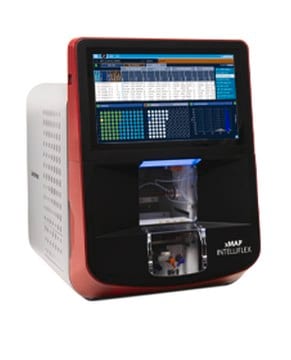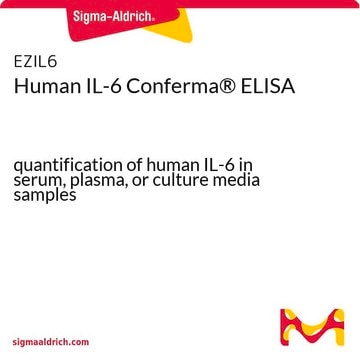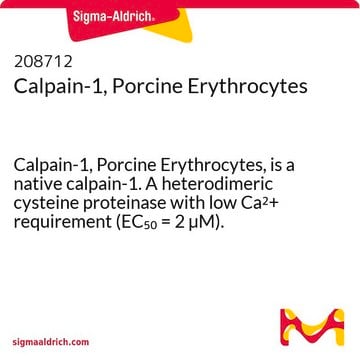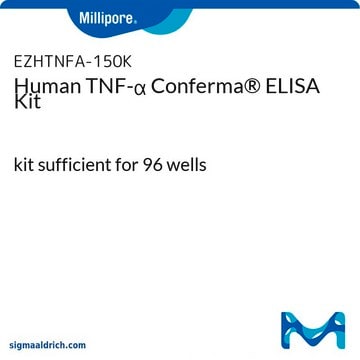Belysa can now be run on both Windows 10 and 11, as well as MacOS (beta version). They can also be downloaded from: https://www.sigmaaldrich.com/services/software-and-digital-platforms/belysa-immunoassay-curve-fitting-software/belysa-downloads
40-122
Software Belysa per interpolazione delle curve dei saggi immunologici
Sinonimo/i:
Software Belysa, Strumento per l’interpolazione delle curve
Scegli un formato
CHF 6’070.00
Spedizione prevista il14 maggio 2025
Scegli un formato
About This Item
CHF 6’070.00
Spedizione prevista il14 maggio 2025
Prodotti consigliati
Descrizione
analysis of data from Luminex®, ELISA and SMCxPRO®
tecniche
ELISA: suitable (data analysis)
Descrizione generale
Applicazioni
Categoria di ricerca:
- Milliplex®
- ELISA
- SMCxPRO®
Confezionamento
Note legali
Raccomandato
Certificati d'analisi (COA)
Cerca il Certificati d'analisi (COA) digitando il numero di lotto/batch corrispondente. I numeri di lotto o di batch sono stampati sull'etichetta dei prodotti dopo la parola ‘Lotto’ o ‘Batch’.
Possiedi già questo prodotto?
I documenti relativi ai prodotti acquistati recentemente sono disponibili nell’Archivio dei documenti.
Contenuto correlato
The newer xMAP® Sheath Fluid PLUS formulation contains 3 modes of microbial action to eliminate potential environmental microbial resistance. See how the preparations compare in this performance comparison of the previous xMAP® Sheath Fluid to the new xMAP® Sheath Fluid PLUS formulation in MILLIPLEX® multiplex assays.
Use the power of high sensitivity immunology assays with SMC® technology to precisely characterize low-abundant cytokines like those from Th1/Th2 and Th17 cells.
-
Is the Belysa software compatible with Windows and MacOS?
Is the Belysa software compatible with Windows and MacOS?
1 answer-
Helpful?
-
-
Is it possible for Belysa to perform a 4PL curve fitting with 1/Y weighting, and if so, could a brief overview be provided on the procedure to accomplish this?
1 answer-
The weighting function in the software is not customizable. It provides two weighting functions that are automatically selected based on the curve fitting formula applied. The user manual provides more detail on this topic.
Weighting
The weighting function affects how the curve fit parameters are calculated and describes how the variance changes in relation to the concentration. For most curve fit options, the weighting function used is 1/y². For Robust curve fit options, the weighting function used is 1 divided by the median value of the replicate group (or the average if 2 or fewer replicates).
Helpful?
-
-
1. Why does MDD sometimes display a value when blanks haven't been defined in the plate map? LOD was N/A, but MDD showed values.
2. Do blank wells contribute to the curve fit equation, or is it only non-zero standard points?
1 answer-
1. In version 1.2.1, both LoD and MDD are interpolated from the standard curve. If the curve does not have any blanks defined, it is expected that the LoD and MDD would be non-applicable (N/A). It is important to note that the software does not designate a separate "blank" well type. Any standard well with an expected concentration of 0.0 is treated as a blank for the purposes of calculating LoD and MDD.
2. Yes, the curve fitting process does take into account blank wells. Therefore, the presence or absence of blank wells within the group will affect the curve fitting.
Helpful?
-
-
Is there a way within the Belysa software to apply a dilution factor to every analyte at once? Also, is there a way to copy and paste a dilution factor down a column of samples within the software?
1 answer-
The best and easiest way to use sample dilutions in Belysa is to have them in the input file (.csv). So either enter into Xponent and have the sample dilutions get exported out of Xponent with your raw data or edit your .csv file to add the desired sample dilution to the end of the file where sample dilutions are kept.
Helpful?
-
Active Filters
Il team dei nostri ricercatori vanta grande esperienza in tutte le aree della ricerca quali Life Science, scienza dei materiali, sintesi chimica, cromatografia, discipline analitiche, ecc..
Contatta l'Assistenza Tecnica.








